Preamble
As a part of a project I'm working on I am trying to provide a convenient way to search for images in our system. We currently provide searching by various types of user added metadata (e.g. title, description, keywords) and by various metadata which we extract (e.g. EXIF, IPTC, XMP, etc). I would also like to add a "colour search" similar to what you can see in google's image search.
The project uses PHP and we can use the Imagemagick extension to segment and quantize the image and extract the most "significant" colours from the image; I'm not entirely certain of the results I'm getting here, but they seem reasonably accurate and certainly better than nothing.
The Problem
The bit that I'm having difficulty on is converting these significant colours into a set of representative colours, e.g. when you look at Google's image search there is a set of 12 colours there. I'd like to mathematically "round" my colour value to the nearest representative colour, so that I can index the image with the colours that I detect and then facet my search results that way.
Any suggestions?


